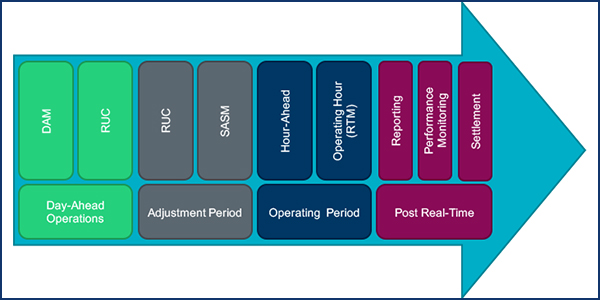By Tom Kleckner
ERCOT‘s Technical Advisory Committee last week endorsed three additional “foundational pieces” to real-time co-optimization (RTC), the market tool being designed to procure energy and ancillary services (AS) every five minutes to find the most cost-effective solution for both requirements.
TAC members unanimously approved the key principles in an email vote following an Aug. 28 briefing by ISO staff. The briefing was held in lieu of the committee’s regularly scheduled meeting to help the task force drafting RTC key principles stay on track.
“We want to harden [the principles] and move on. We don’t want to be like nodal and do it over again,” said ERCOT’s Matt Mereness, who chairs the Real-Time Co-Optimization Task Force (RTCTF), referencing the cumbersome effort to design and implement the grid operator’s nodal market.
“I didn’t think we needed to spend a whole meeting on this,” said TAC Chair Bob Helton, of ENGIE.
The key principles (KPs) reviewed by the TAC were:
- KP 1.4 will modify the systems and applications that provide input for the current real-time market (RTM) optimization engine to accommodate the awarding of AS in real time. AS will be a resource specific award, and regulation instructions will be generation resource-specific.
- KP 1.5 will modify processes for deploying AS to accommodate real-time awards. The principle will look at systems and communications between ERCOT and qualified scheduling entities in dispatching and deploying AS.
- KP 3 will modify the reliability unit commitment (RUC) process to be consistent with how energy and AS will be awarded in the RTM. RUC will review resources scheduled to be available to determine whether additional resource commitments are needed to meet the load forecast and minimum AS requirements and resolve transmission congestion under defined penalty curves and factors.
The TAC held an email vote following the online session to endorse the principles. Members have until Aug. 30 to send in their votes.
The Texas Public Utility Commission directed ERCOT to add RTC to its market. The grid operator has estimated it will take four or five years and at least $40 million to modify its market, but its Independent Market Monitor says the grid operator could save as much as $400 million annually in reduced congestion costs and AS costs. (See PUCT Continues Review of Potential Market Improvements.)
The task force faces a February deadline to complete 13 key principles. It is currently working on AS demand curves and an offer structure, and it has begun discussions on changes to the day-ahead market.
The TAC in July approved the first set of five principles. (See “TAC Approves First Real-time Co-optimization Principles,” ERCOT Technical Advisory Committee Briefs: July 24, 2019.)
The task force next meets Sept. 19 and Sept. 24. The latter meeting includes a half-day lessons-learned session with MISO, PJM and SPP representatives.





